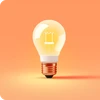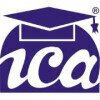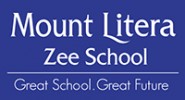Filter interviews by
Panjab University Interview Questions and Answers
21 Interview questions
A framework is a structured platform that provides foundational support for building applications or systems.
Frameworks provide reusable code and components, reducing development time.
Examples include web frameworks like Django for Python and Angular for JavaScript.
They often enforce design patterns, promoting best practices in coding.
Frameworks can be specific to certain tasks, like TensorFlow for machine learnin...
Blockchain is a decentralized digital ledger that securely records transactions across multiple computers.
Decentralization: No central authority; data is distributed across a network of computers.
Immutability: Once recorded, transactions cannot be altered or deleted, ensuring data integrity.
Transparency: All participants can view the entire transaction history, promoting trust.
Consensus Mechanisms: Transactions ar...
Common cyber security threats include malware, phishing, ransomware, and DDoS attacks that compromise data and systems.
Malware: Malicious software like viruses and worms that can damage or disrupt systems. Example: WannaCry ransomware.
Phishing: Fraudulent attempts to obtain sensitive information by disguising as a trustworthy entity. Example: Email scams.
Ransomware: A type of malware that encrypts files and demand...
A web browser is a software application used to access and navigate the internet, displaying web pages and multimedia content.
Web browsers interpret HTML, CSS, and JavaScript to render web pages.
Popular examples include Google Chrome, Mozilla Firefox, Safari, and Microsoft Edge.
Browsers often include features like bookmarks, history, and tabbed browsing.
They can support various extensions and plugins to enhance fu...
The CPU, or Central Processing Unit, is the primary component of a computer that performs calculations and executes instructions.
The CPU is often referred to as the 'brain' of the computer.
It processes data and controls the operation of other components.
Modern CPUs can have multiple cores, allowing for parallel processing (e.g., dual-core, quad-core).
CPUs are measured in clock speed, typically in gigahertz (GHz), ...
A file is a digital container for storing data, such as documents, images, or programs, on a computer system.
Files can be of various types, such as text files (.txt), image files (.jpg), and executable files (.exe).
Files are organized in a hierarchical structure within directories or folders.
Each file has a name and an extension that indicates its format and associated application.
Files can be created, modified, d...
A computer consists of hardware and software components that work together to perform tasks and process data.
Central Processing Unit (CPU): The brain of the computer that performs calculations and executes instructions.
Memory (RAM): Temporary storage that holds data and instructions for quick access by the CPU.
Storage: Devices like Hard Disk Drives (HDD) or Solid State Drives (SSD) that store data permanently.
Moth...
RAM is volatile memory for temporary data storage, while ROM is non-volatile memory for permanent data storage.
RAM (Random Access Memory) is used for temporary data storage while a computer is running.
Examples of RAM include DDR4 and DDR5 memory modules.
ROM (Read-Only Memory) stores firmware and system software permanently.
Examples of ROM include BIOS and firmware in embedded systems.
RAM is volatile, meaning it lo...
Data in computers refers to information processed or stored by a computer, including numbers, text, images, and sounds.
Data can be classified into two main types: structured (e.g., databases) and unstructured (e.g., emails, videos).
Examples of data include numerical values like '25', text strings like 'Hello World', and multimedia files like 'image.jpg'.
Data is represented in binary format (0s and 1s) for processi...
The invention of the computer cannot be attributed to a single inventor; it evolved through contributions from many pioneers.
Charles Babbage is known as the 'father of the computer' for his design of the Analytical Engine in the 1830s.
Alan Turing developed the concept of a theoretical computing machine, known as the Turing Machine, in the 1930s.
John von Neumann contributed to the architecture of modern computers w...
Panjab University Interview Experiences
3 interviews found
(1 Question)
- Q1. Mern stack project questions?
(1 Question)
- Q1. What is the lifecycle of the MERN stack?
- Ans.
The MERN stack lifecycle involves setting up the environment, developing the application, testing, deploying, and maintaining.
Setting up the environment involves installing MongoDB, Express.js, React, and Node.js.
Development phase includes creating the frontend using React, backend using Node.js and Express, and connecting to MongoDB.
Testing is done to ensure the application functions correctly and meets requirements.
D...
I appeared for an interview before Apr 2024, where I was asked the following questions.
- Q1. What is computer
- Ans.
A computer is an electronic device that processes data, performing calculations and executing instructions to solve problems.
Computers can be classified into various types: desktops, laptops, tablets, and servers.
They operate using hardware (physical components) and software (programs and applications).
Examples of software include operating systems like Windows, macOS, and applications like Microsoft Office.
Computers a...
- Q2. What are RAM and ROM?
- Ans.
RAM is volatile memory for temporary data storage, while ROM is non-volatile memory for permanent data storage.
RAM (Random Access Memory) is used for temporary data storage while a computer is running.
Examples of RAM include DDR4 and DDR5 memory modules.
ROM (Read-Only Memory) stores firmware and system software permanently.
Examples of ROM include BIOS and firmware in embedded systems.
RAM is volatile, meaning it loses d...
- Q3. What is cpu
- Ans.
The CPU, or Central Processing Unit, is the primary component of a computer that performs calculations and executes instructions.
The CPU is often referred to as the 'brain' of the computer.
It processes data and controls the operation of other components.
Modern CPUs can have multiple cores, allowing for parallel processing (e.g., dual-core, quad-core).
CPUs are measured in clock speed, typically in gigahertz (GHz), indic...
- Q4. What is battery
- Ans.
A battery is a device that stores and provides electrical energy through chemical reactions.
Batteries convert chemical energy into electrical energy.
Common types include alkaline, lithium-ion, and lead-acid batteries.
Used in various applications like smartphones, laptops, and electric vehicles.
Rechargeable batteries can be reused multiple times, e.g., lithium-ion.
Non-rechargeable batteries, like AA batteries, are used ...
- Q5. Hardware components upgrade
- Q6. Networking internet connectivity
- Q7. Software operating system
- Q8. Specific technical issues
- Q9. Programming language
- Q10. Artificial intelligence
- Q11. Theory of competition
- Ans.
The theory of competition explores how businesses vie for market share, influencing prices, quality, and innovation.
Competition drives innovation; for example, tech companies constantly improve products to attract customers.
Price competition can lead to lower prices for consumers, as seen in the airline industry where companies often undercut each other.
Healthy competition can enhance quality; for instance, fast-food c...
- Q12. Web development
- Q13. Database management
- Q14. Human computer interaction
- Q15. Computer vision
- Q16. Cloud computing
- Q17. What are some application of machine learning
- Ans.
Machine learning is used in various fields for predictive analytics, automation, and enhancing decision-making processes.
Fraud detection in banking: Identifying unusual patterns in transactions.
Recommendation systems: Used by Netflix and Amazon to suggest content/products.
Image recognition: Employed in social media platforms for tagging photos.
Natural language processing: Used in virtual assistants like Siri and Alexa.
...
- Q18. What are some common cyber security threats
- Ans.
Common cyber security threats include malware, phishing, ransomware, and DDoS attacks that compromise data and systems.
Malware: Malicious software like viruses and worms that can damage or disrupt systems. Example: WannaCry ransomware.
Phishing: Fraudulent attempts to obtain sensitive information by disguising as a trustworthy entity. Example: Email scams.
Ransomware: A type of malware that encrypts files and demands pay...
- Q19. Natural language processing
- Q20. Quantum computing
- Q21. How does BLOCKCHAIN work
- Ans.
Blockchain is a decentralized digital ledger that securely records transactions across multiple computers.
Decentralization: No central authority; data is distributed across a network of computers.
Immutability: Once recorded, transactions cannot be altered or deleted, ensuring data integrity.
Transparency: All participants can view the entire transaction history, promoting trust.
Consensus Mechanisms: Transactions are val...
- Q22. Computer graphics
- Q23. What are the main components of a computer
- Ans.
A computer consists of hardware and software components that work together to perform tasks and process data.
Central Processing Unit (CPU): The brain of the computer that performs calculations and executes instructions.
Memory (RAM): Temporary storage that holds data and instructions for quick access by the CPU.
Storage: Devices like Hard Disk Drives (HDD) or Solid State Drives (SSD) that store data permanently.
Motherboa...
- Q24. What does a printer do
- Ans.
A printer is a peripheral device that produces hard copies of digital documents and images from a computer or other devices.
Converts digital data into physical form, such as paper prints.
Types of printers include inkjet, laser, and dot matrix.
Inkjet printers spray tiny droplets of ink to create images.
Laser printers use toner and heat to produce high-quality text and graphics.
Printers can also produce color or black-an...
- Q25. What is monitor
- Ans.
A monitor is an output device that displays visual information from a computer.
Displays images, videos, and text generated by the computer's graphics card.
Types include LCD, LED, and CRT monitors.
Resolution determines clarity; common resolutions are 1920x1080 (Full HD) and 3840x2160 (4K).
Monitors can have different refresh rates, affecting smoothness in motion; e.g., 60Hz vs. 144Hz.
Some monitors support touch input, al...
- Q26. What is a web browser
- Ans.
A web browser is a software application used to access and navigate the internet, displaying web pages and multimedia content.
Web browsers interpret HTML, CSS, and JavaScript to render web pages.
Popular examples include Google Chrome, Mozilla Firefox, Safari, and Microsoft Edge.
Browsers often include features like bookmarks, history, and tabbed browsing.
They can support various extensions and plugins to enhance functio...
- Q27. What is a file
- Ans.
A file is a digital container for storing data, such as documents, images, or programs, on a computer system.
Files can be of various types, such as text files (.txt), image files (.jpg), and executable files (.exe).
Files are organized in a hierarchical structure within directories or folders.
Each file has a name and an extension that indicates its format and associated application.
Files can be created, modified, delete...
- Q28. What is a folders
- Ans.
Folders are digital containers used to organize and store files on a computer system.
Folders help in categorizing files for easy access and management.
Example: A folder named 'Projects' can contain files related to various projects.
Folders can also contain subfolders, creating a hierarchy for better organization.
Example: A folder 'Photos' can have subfolders like 'Vacations' and 'Family'.
Folders can be created, renamed...
- Q29. What is a Framework
- Ans.
A framework is a structured platform that provides foundational support for building applications or systems.
Frameworks provide reusable code and components, reducing development time.
Examples include web frameworks like Django for Python and Angular for JavaScript.
They often enforce design patterns, promoting best practices in coding.
Frameworks can be specific to certain tasks, like TensorFlow for machine learning.
- Q30. What are access modifiers
- Ans.
Access modifiers control the visibility of class members in object-oriented programming, enhancing encapsulation and security.
Public: Members are accessible from any other class. Example: 'public int age;'
Private: Members are accessible only within the same class. Example: 'private String name;'
Protected: Members are accessible within the same package and subclasses. Example: 'protected void display();'
Default: Members...
- Q31. What is called data in computer
- Ans.
Data in computers refers to information processed or stored by a computer, including numbers, text, images, and sounds.
Data can be classified into two main types: structured (e.g., databases) and unstructured (e.g., emails, videos).
Examples of data include numerical values like '25', text strings like 'Hello World', and multimedia files like 'image.jpg'.
Data is represented in binary format (0s and 1s) for processing by...
- Q32. Who is the inventor of computer
- Ans.
The invention of the computer cannot be attributed to a single inventor; it evolved through contributions from many pioneers.
Charles Babbage is known as the 'father of the computer' for his design of the Analytical Engine in the 1830s.
Alan Turing developed the concept of a theoretical computing machine, known as the Turing Machine, in the 1930s.
John von Neumann contributed to the architecture of modern computers with t...
- Q33. 1 KB is equal to how many bytes
- Ans.
1 KB (Kilobyte) is equal to 1024 bytes, a standard measurement in digital data storage.
1 KB = 1024 bytes, based on binary system used in computing.
In decimal terms, 1 KB is often approximated as 1000 bytes.
Memory sizes in computers are typically measured in KB, MB (Megabytes), GB (Gigabytes), etc.
Example: A simple text file may be around 1 KB in size, containing about 1000 characters.
Interview Preparation Tips
Skills evaluated in this interview
I applied via Referral and was interviewed in Aug 2023. There were 2 interview rounds.
(1 Question)
- Q1. Related to Project to be Implemented and CMOS VLSI Design
(1 Question)
- Q1. Project Handling and Duration of project
- Ans.
Project handling involves managing and overseeing the various aspects of a project, including its duration.
Project handling includes planning, organizing, and controlling project activities.
It involves setting project goals, defining project scope, and creating a project schedule.
Project duration refers to the time it takes to complete a project from start to finish.
Factors influencing project duration include project ...
Top trending discussions






Interview questions from similar companies

Software Developer Interview Questions & Answers
Lovely Professional Universityposted on 30 Oct 2017
Interview Preparation Tips
Experience: They check my skills also my mind skills with cross questioning
Tips: Consentration on questions
Round: Problem Statement
Experience: They check my skills also my mind skills with cross questioning
Tips: Consentration on questions

Interview Questionnaire
1 Question
- Q1. They basically asked me about why I deserve this job position, and what makes me good at it?
Interview Preparation Tips

I applied via Campus Placement and was interviewed before Mar 2021. There were 3 interview rounds.
Teach a topic of your choice
(2 Questions)
- Q1. What are your salary expectations?
- Ans.
I expect a competitive salary that reflects my skills and experience, ideally in the range of $60,000 to $70,000 annually.
Research industry standards: For example, similar roles in our region typically offer between $60,000 and $70,000.
Consider my experience: With over 5 years in management, I bring valuable skills that justify a higher salary.
Discuss benefits: I'm also interested in the overall compensation package, i...
- Q2. Tell me about yourself.
(2 Questions)
- Q1. Will you be comfortable staying away from home for the job?
- Ans.
I am comfortable staying away from home for work, as it offers opportunities for growth and new experiences.
I have previously traveled for work, which helped me develop adaptability and resilience.
Staying away from home allows me to immerse myself in the job and build stronger relationships with colleagues.
I view travel as a chance to explore new cultures and environments, enhancing my personal and professional growth.
- Q2. Are you willing to travel?
Interview Preparation Tips
- Post related topics

I applied via Monster and was interviewed before Jan 2022. There were 2 interview rounds.

(2 Questions)
- Q1. Whats your background ? How is your presentation skills? How would you set the target for business?
- Ans.
I have a diverse background in management, strong presentation skills, and a strategic approach to setting business targets.
Background: Over 5 years in management roles across various industries, including retail and finance.
Presentation Skills: Regularly present to stakeholders, using tools like PowerPoint and data visualization to convey complex information clearly.
Setting Targets: Analyze historical data and market ...
- Q2. Whats your relevant experience ?
Interview Preparation Tips
Attire
Fileld knowledge
Sales skills
English communication

Assistant Manager Interview Questions & Answers
Chandigarh Universityposted on 16 Jun 2022
I applied via Referral and was interviewed before Jun 2021. There was 1 interview round.
(1 Question)
- Q1. General questions regarding self and work
Interview Preparation Tips
- Self Service

I applied via Job Fair and was interviewed in Mar 2022. There were 2 interview rounds.

I'm trusting me I will pass this interview
Interview Preparation Tips
- Human Skills
- Team Foundation Server

I applied via Approached by Company and was interviewed before Dec 2023. There was 1 interview round.
PPT presentation on comparative analysis
Panjab University Interview FAQs
Tell us how to improve this page.
Interview Questions for Popular Designations
Overall Interview Experience Rating
based on 4 interview experiences
Difficulty level
Duration
Interview Questions from Similar Companies
Panjab University Reviews and Ratings
based on 56 reviews
Rating in categories
|
Assistant Professor
30
salaries
| ₹2 L/yr - ₹8 L/yr |
|
PHD Research Scholar
20
salaries
| ₹3 L/yr - ₹5 L/yr |
|
Research Scholar
15
salaries
| ₹4 L/yr - ₹6 L/yr |
|
Senior Research Fellow
9
salaries
| ₹3.9 L/yr - ₹5.4 L/yr |
|
Research Associate
7
salaries
| ₹3 L/yr - ₹8 L/yr |

Frankfinn Institute of Air Hostess Training

Amity University

Chandigarh University

Orchids International School
- Home >
- Interviews >
- Panjab University Interview Questions










